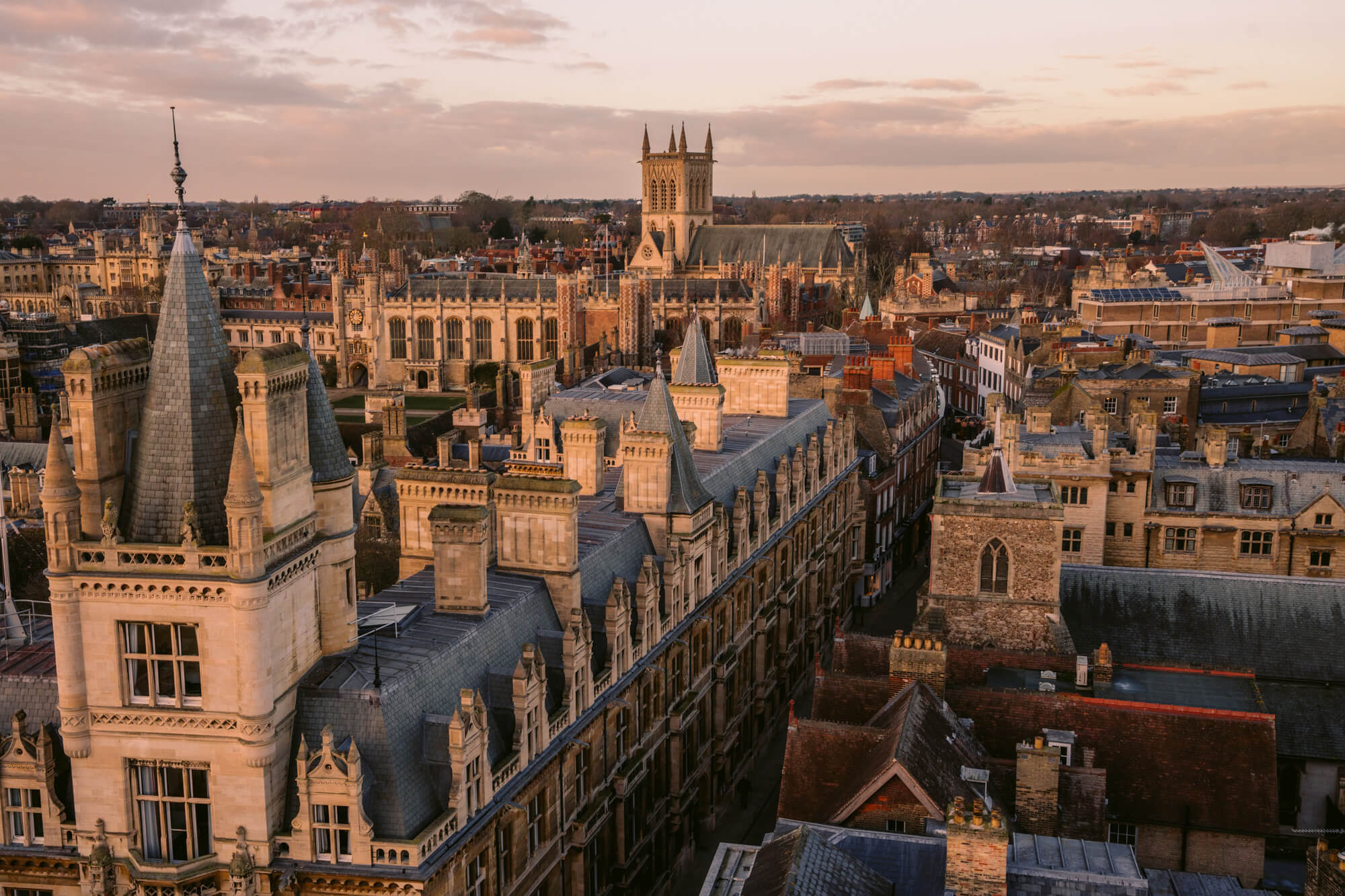*FYI - this post may contain affiliate links, which means we earn a commission at no extra cost to you if you purchase from them. Also, as an Amazon Associate I earn from qualifying purchases. Check out our Privacy Policy and Disclosure for more info.
From punting on the River Cam past impressive university buildings to seeking out unique hidden sculptures, those looking for places to visit and things to do in Cambridge are definitely spoiled for choice.
Cambridge is known for being a university city that rivals Oxford in history and prestige but there’s so much more to see than just university buildings (although admittedly, many of them are well worth a visit)!
In this post, we’ll be sharing our top picks for places to visit in Cambridge, including the most beautiful buildings, interesting museums, and quirky sights.
We hope you enjoy learning about this beautiful, fascinating city and be sure to let us know in the comments which Cambridge must-sees we should add to our list!
Great Saint Mary’s
Looking for the best view that the city has to offer? Be sure to add Great Saint Mary’s to your list of must-see places in Cambridge!
Great St Mary’s is the picturesque Grade I listed parish church for central Cambridge, famed for its sweeping tower views and lengthy history spanning over 800 years.
While many visitors come to admire the interior of the church (notable for its two organs and beautiful stained glass), the true star of the show is the 360-degree view on top, the perfect reward after climbing up 123 narrow steps.
PRACTICAL INFO FOR VISITING: Admission to the Tower costs 6 GBP per adult, and the last entry for climbers is 30 minutes before closing time.
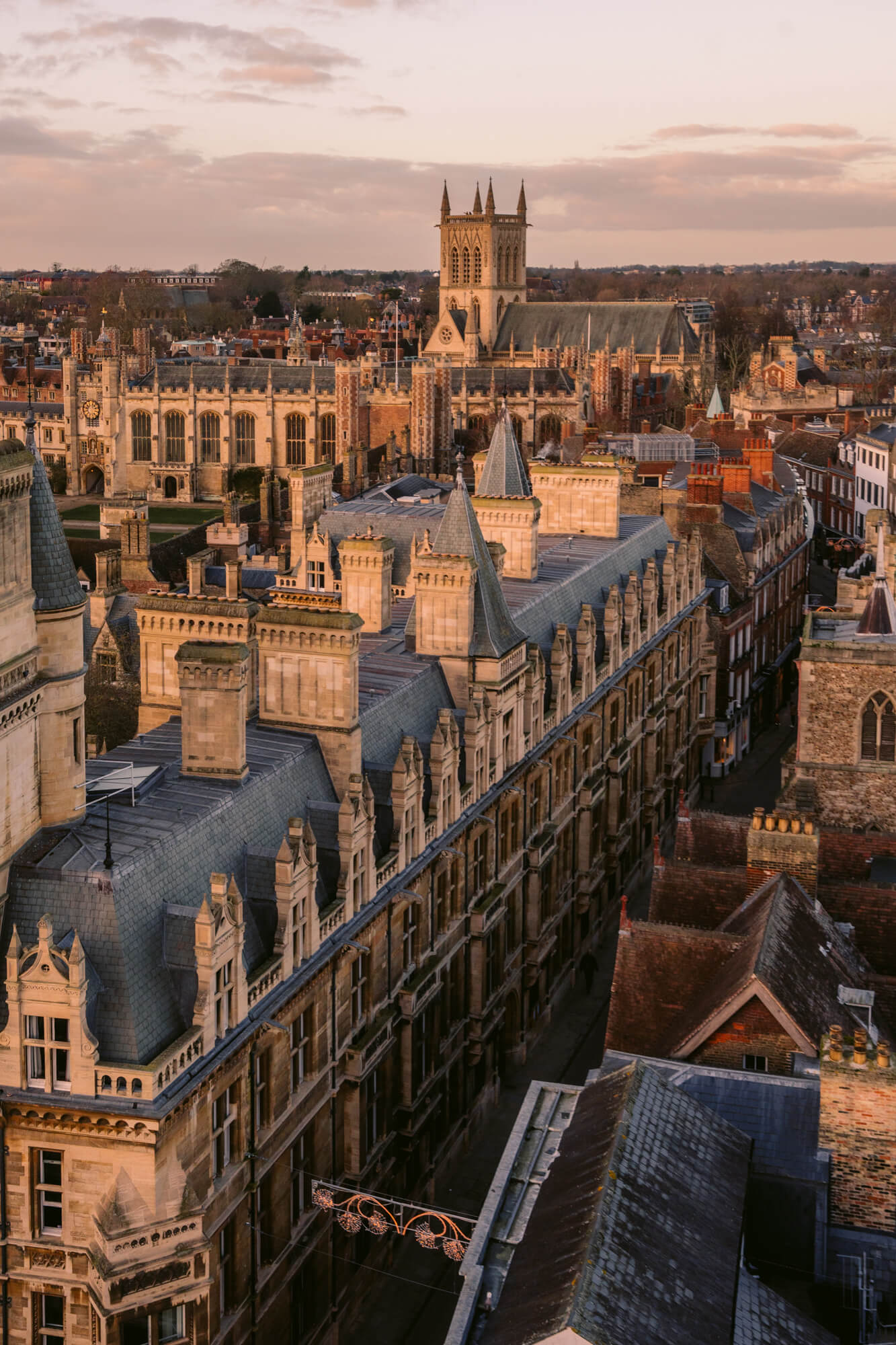
King’s College Chapel
Cambridge University is home to 31 different colleges, but the most popular one among tourists is no doubt the stunning King’s College, home to a chapel that will leave you absolutely mesmerized.
This Perpendicular Gothic masterpiece lays claim to an impressive unique feature: the largest fan vault in the world… as well as a set of vibrant stained glass windows, and a series of informative displays about the chapel’s history and construction, dating all the way back to its origins in the 15th century.
Of course, your ticket to the chapel also includes access to some parts of the King’s College grounds as well, so be sure to have a look and enjoy the beautiful surroundings.
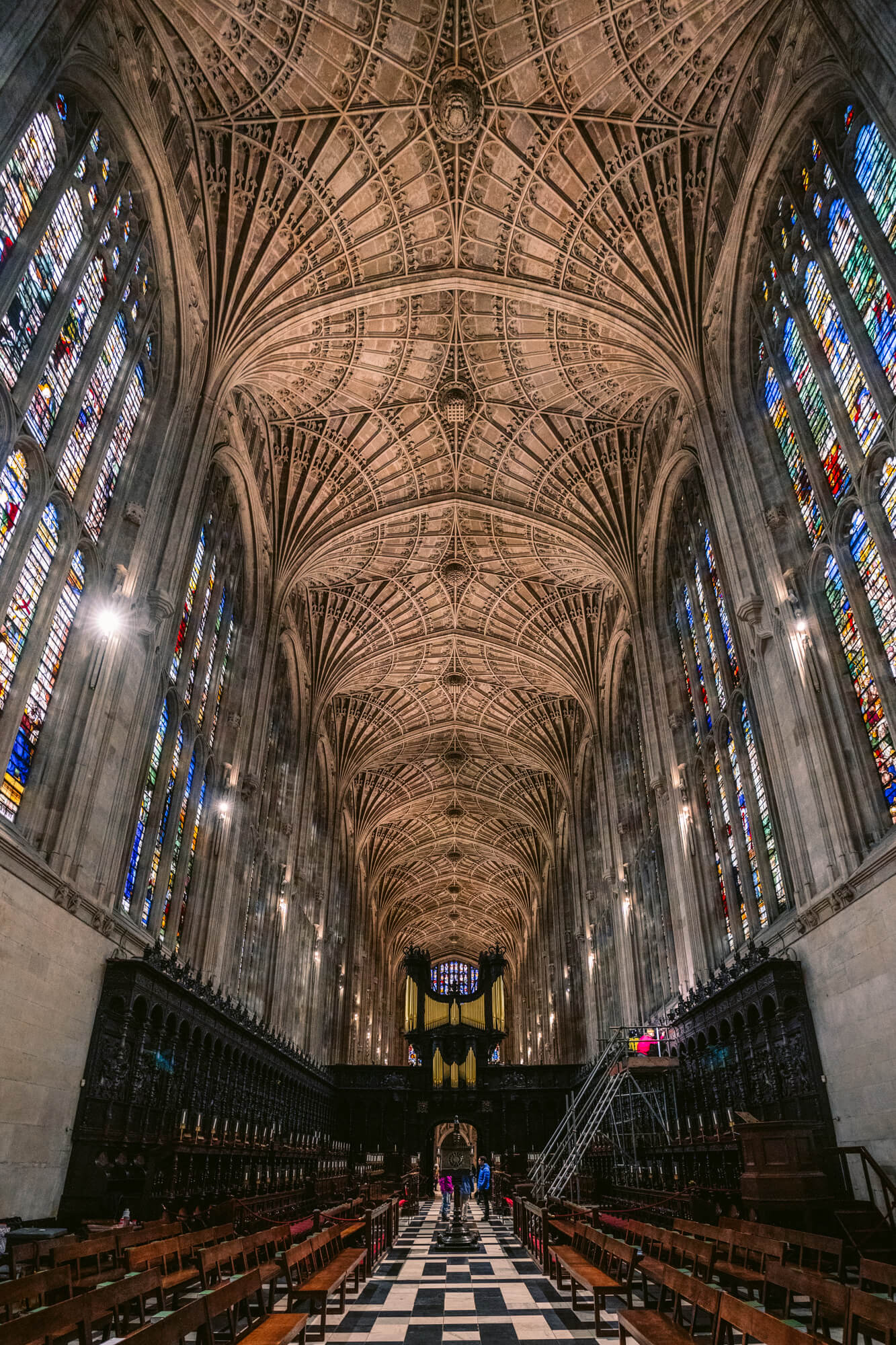
The Fitzwilliam Museum
Often hailed as one of the best small museums in Europe, the Fitzwilliam Museum is definitely one of the most popular Cambridge tourist attractions for art and history lovers.
Founded in 1816, this small but mighty museum’s collection includes work from some of the art world’s most famous names, from Van Gogh and Monet to Rubens and Van Dyck. And while it may be small, it still manages to pack in more than half a million objects and artworks on display!
Whether you’re interested in antiquities, rare manuscripts and books, ancient coins and medals or traditional art, you will easily be able to spend hours admiring the five departments within this museum.
PRACTICAL INFO FOR VISITING: Admission is free, but pre-booking on their official website is essential. They are closed on Mondays.
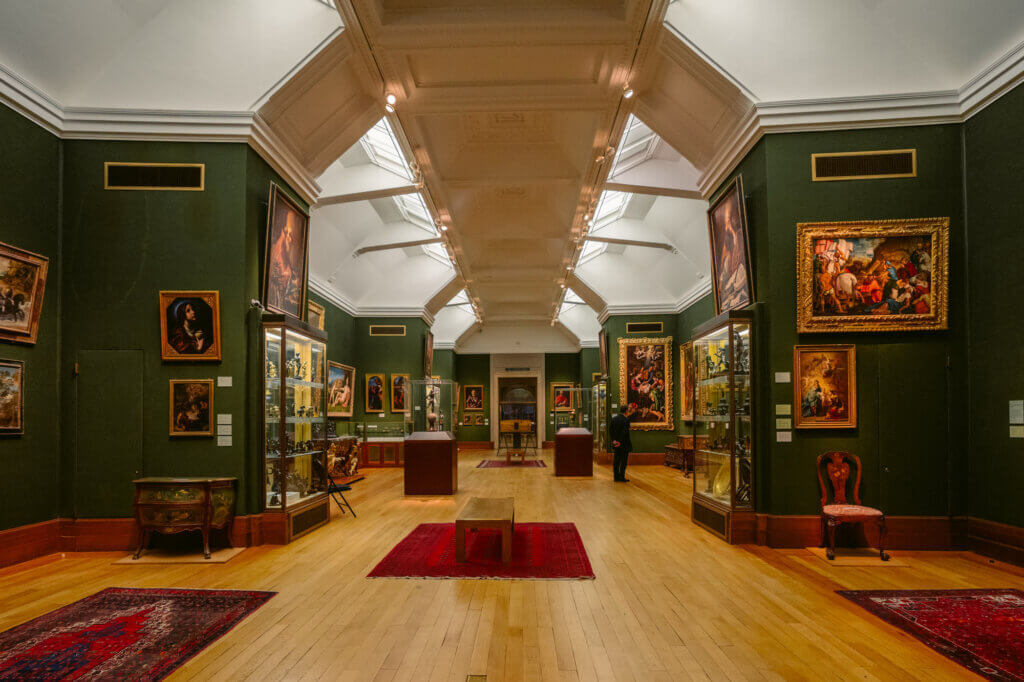
The Eagle
Originally opened in 1667, the Eagle is THE most famous pub in Cambridge, having seen its fair share of historical moments over the centuries.
For instance, this is the pub where Francis Crick and James Watson announced their groundbreaking scientific discovery: the DNA double helix. You can even have a pint at the very table where this moment was said to have taken place (conveniently marked by a golden plaque mounted on the wall).
Look up and you’ll also see another historical peculiarity: graffiti burnt into the ceiling, a legacy from the pub’s days as a watering hole for RAF pilots during WWII.
PRACTICAL INFO FOR VISITING: From the main entrance, keep walking further into the pub (past the courtyard) to enter the RAF Bar where this famous table (and the ceiling graffiti) is located.
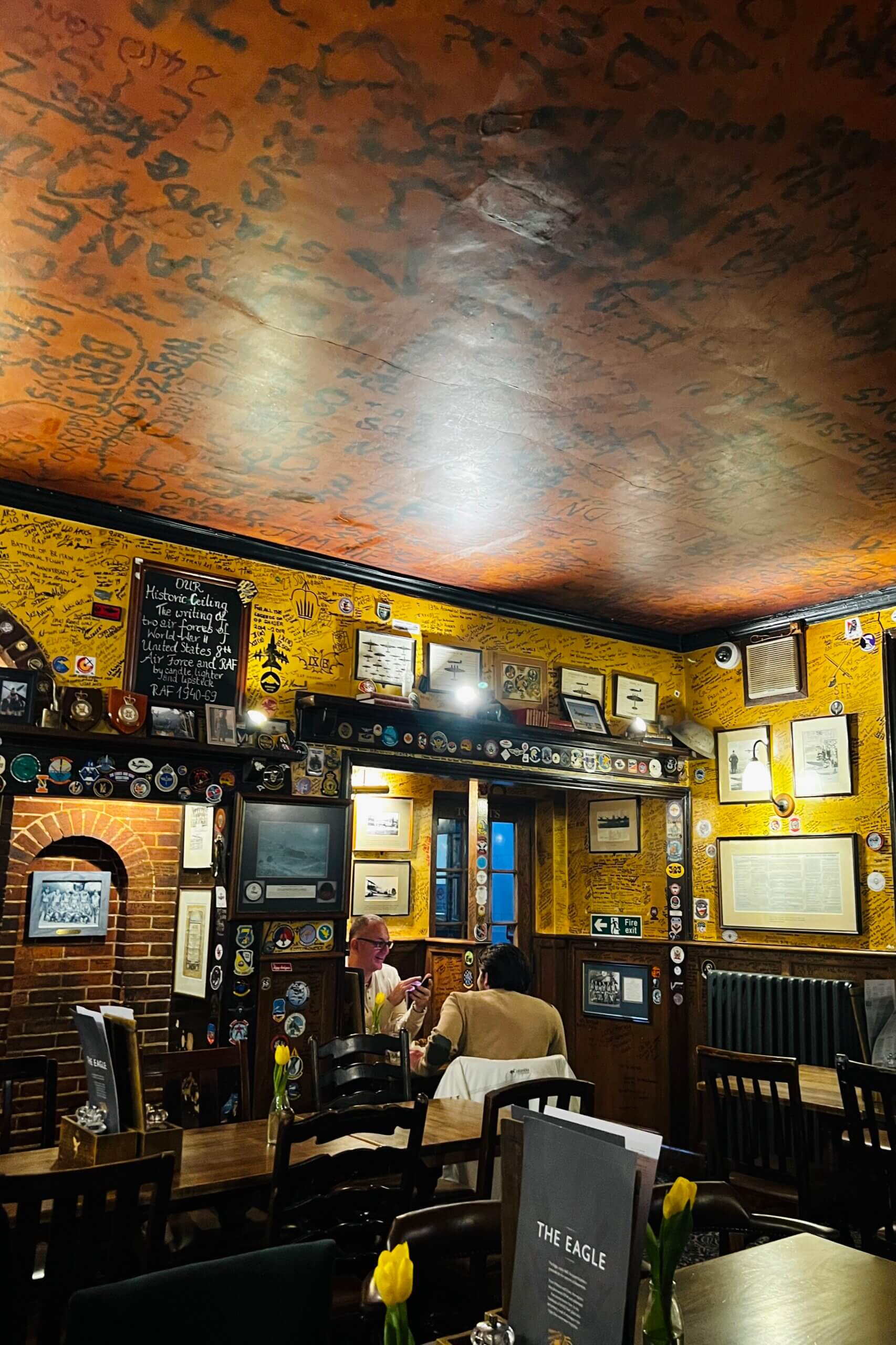
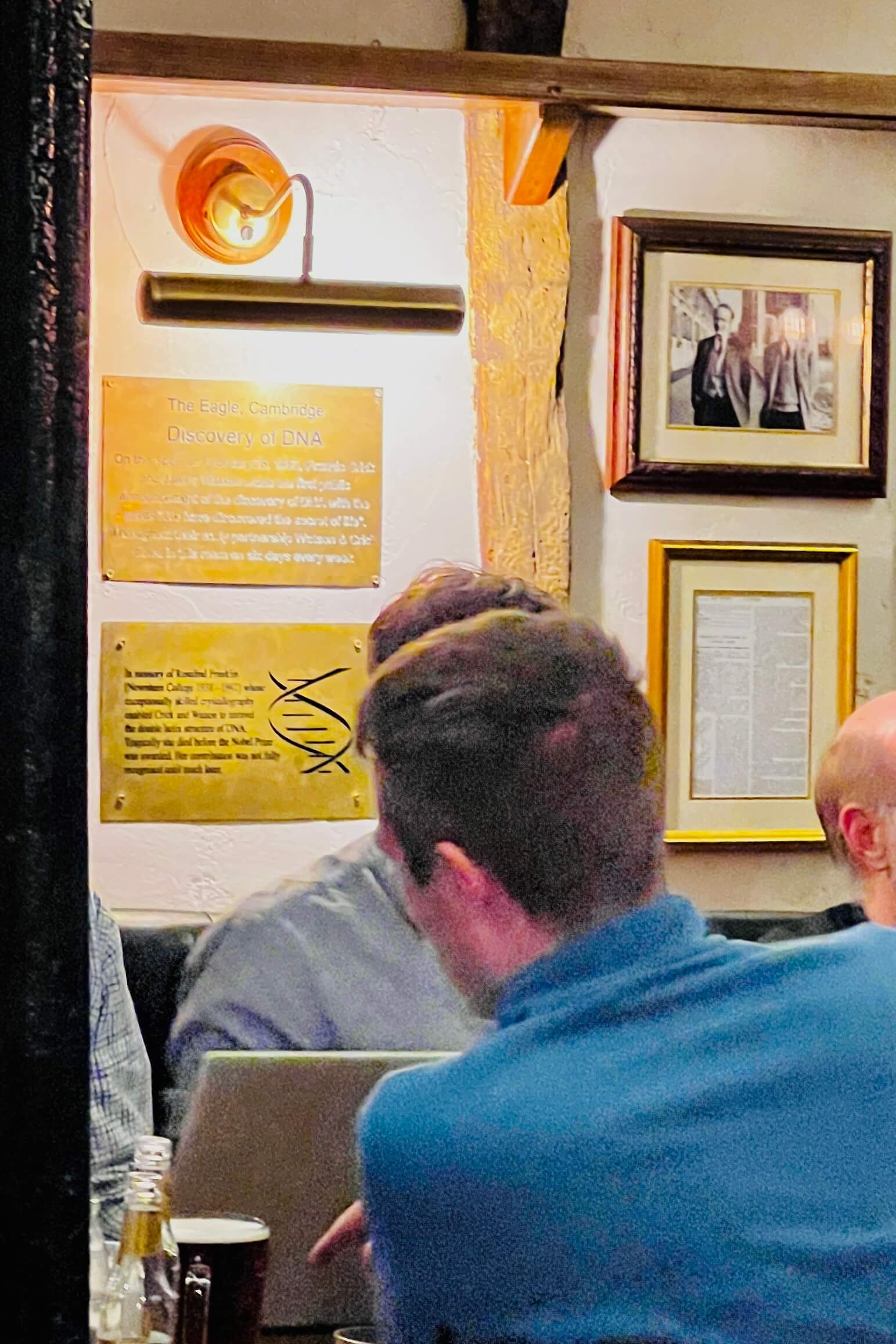
The Pickerel Inn
While the Eagle may be the best known pub in the city, the title of oldest pub in Cambridge actually goes to the Pickerel Inn, which was supposedly first licensed in 1608. It was also recommended to us by our hotel bartender as “THE best pub in Cambridge”.
These days, the Pickerel looks fairly modern, although exposed beams and dark wooden detailing can help you imagine what it might have looked like back in the day.
We’d definitely recommend stopping by for a quick drink… especially for Guinness lovers! Fluke or not, this was one of the best pints of Guinness we’ve ever had outside of Ireland.
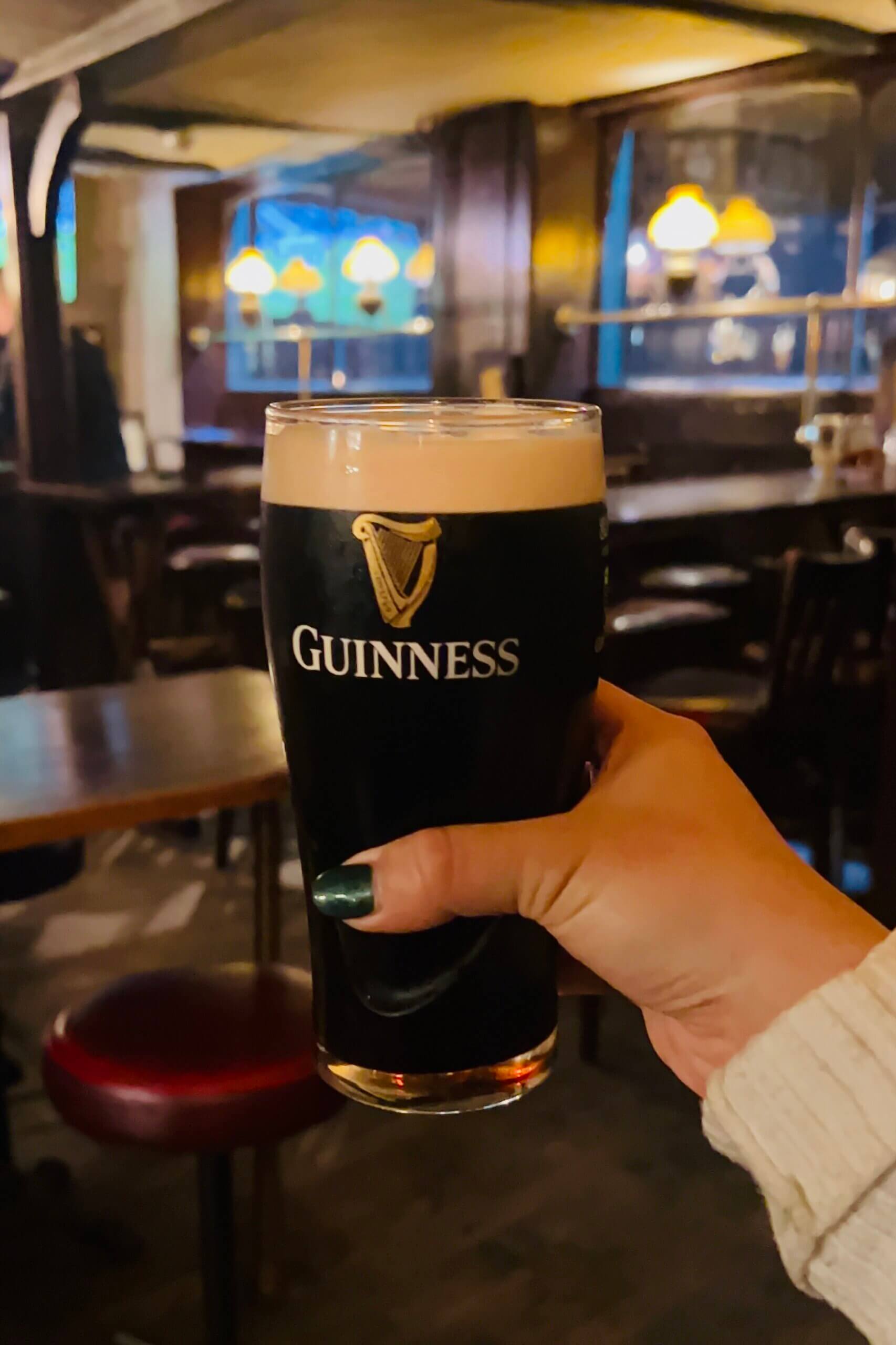
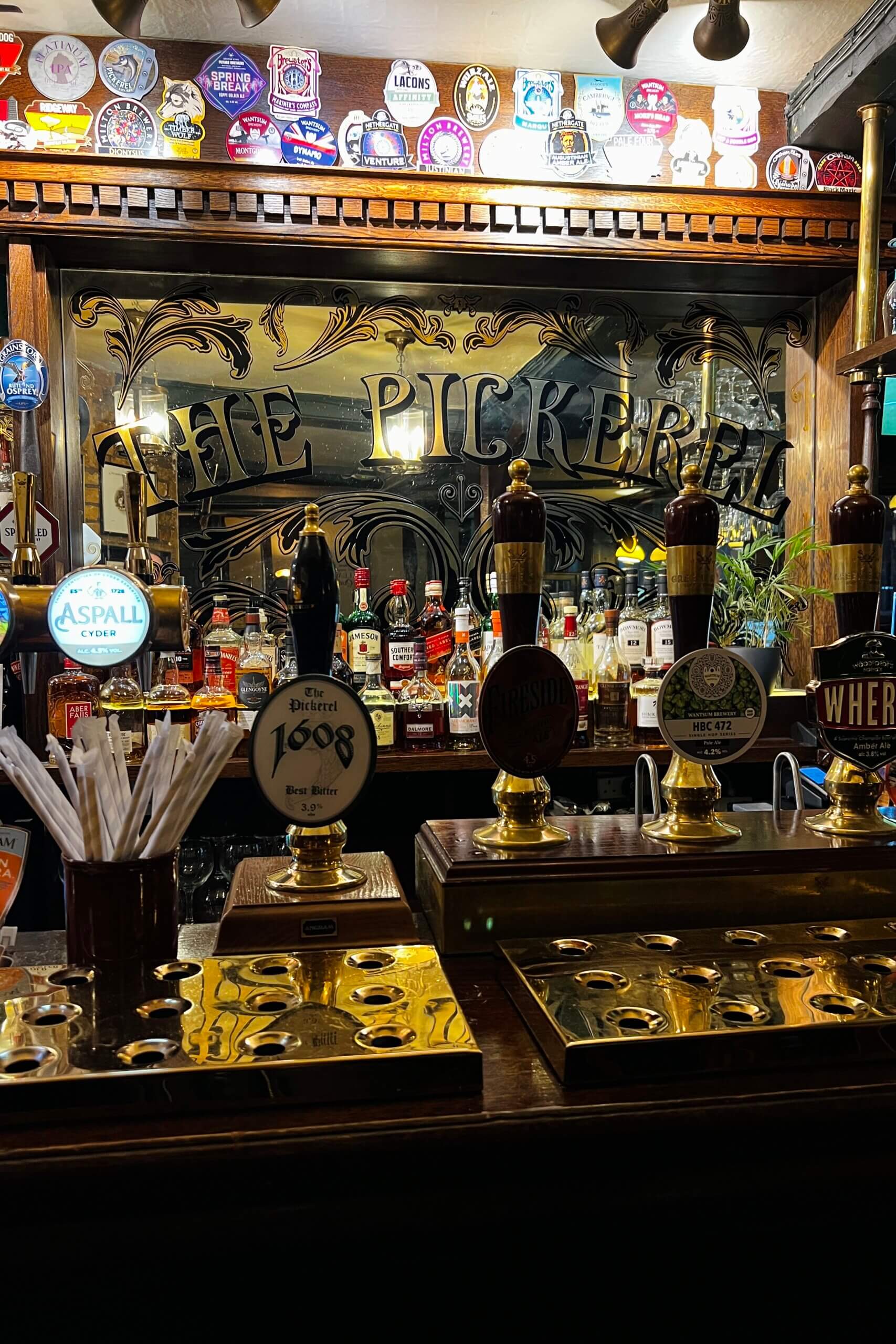
Bridge of Sighs
Modelled after the glorious bridge of the same name in Venice, the Cambridge Bridge of Sighs is a lovely sight that is only viewable either via paid entry to St John’s College, or a paid punting tour.
Going punting (riding in a flat-bottomed boat which is pushed with a pole in shallow water) is one of the most popular pastimes in Cambridge, among locals and tourists alike who want to enjoy the sights at a leisurely pace, especially in summer. The River Cam flows beside many of the most beautiful university buildings, so it’s a great way to see the sights, such as the Bridge of Sighs.
Constructed in 1831, Cambridge’s Bridge of Sighs connects the Third Court and New Court of St John’s College. It’s a Grade I listed building in the Gothic Revival architectural style and is one of the most photographed buildings in Cambridge.
It has also been used as a filming location for the movies “Elizabeth: The Golden Age” and “The Theory of Everything” about former Cambridge student Stephen Hawking.
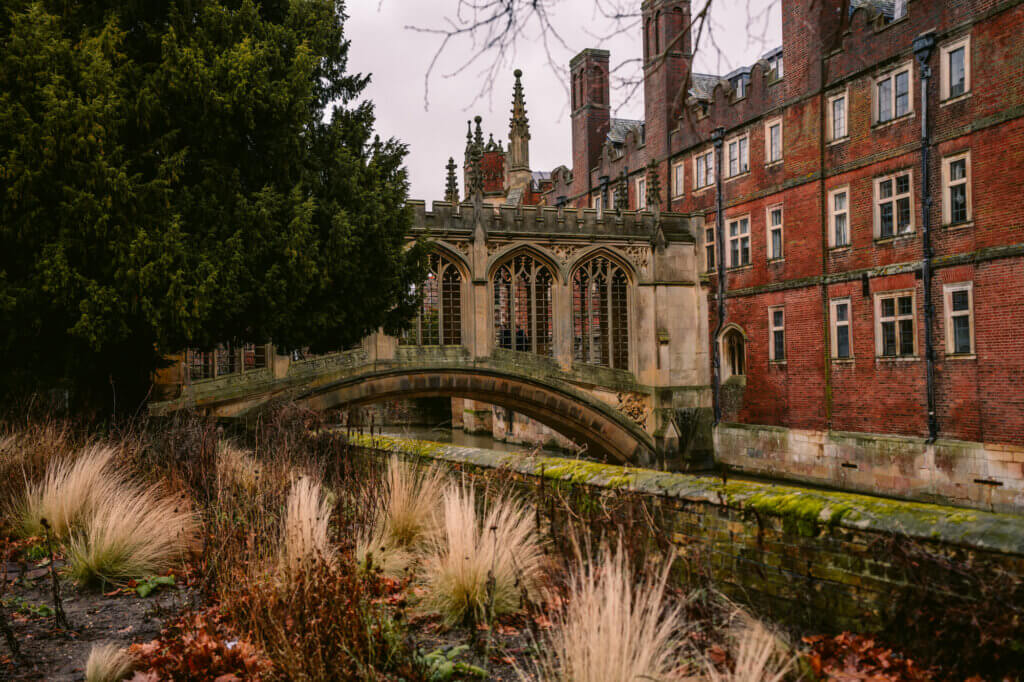
St John’s College Chapel
If you choose to pay the entry fee for St John’s College to see the Bridge of Sighs, then another must-visit place in Cambridge is the St John’s College Chapel.
Designed by Sir George Gilbert Scott and inspired by the Sainte-Chapelle in Paris, St John’s Chapel was constructed between 1866 and 1869 to replace a 13th-century chapel on the site. The church is stunning, both inside and out, with statues of important college benefactors and alumni on the exterior buttresses.
Inside are beautiful stained glass windows along with some panelling that was salvaged from the original medieval chapel. If you want to attend the chapel for a service then it is free (although you can’t see any other parts of the college). Check here for upcoming service dates and times.
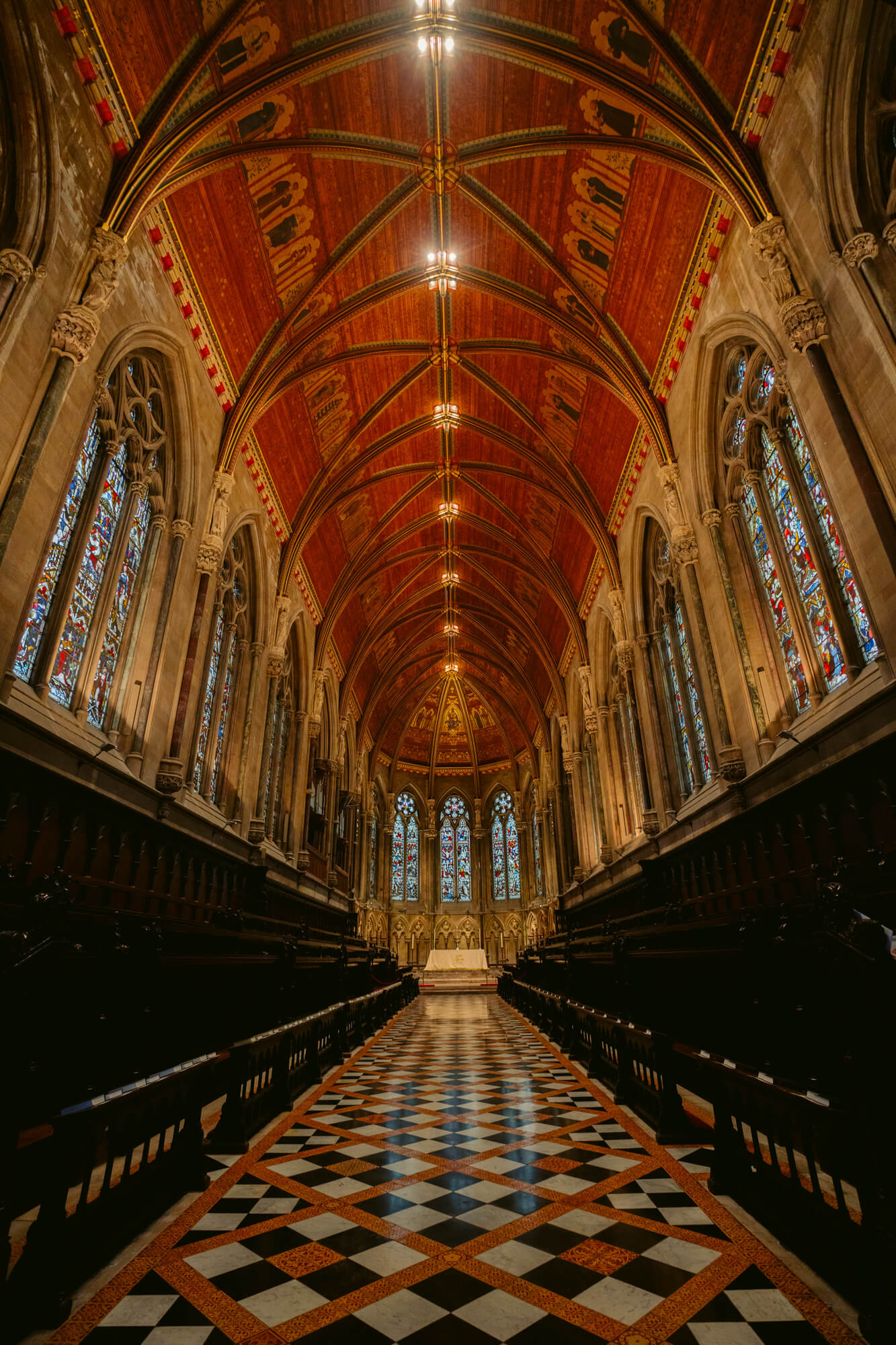
Cambridge’s Tiny Doors
Known as dinky doors, one of the quirkiest and most adorable set of places to visit in Cambridge are the tiny doors that have been installed in secretive locations around town, whimsically creating ‘petite portals into other worlds’.
Sometime in 2019, these little doors (created by anonymous artists) began to appear around Cambridge, with the goal of sparking joy and hope among passersby.
At the time of writing, Cambridge has fourteen dinky doors to discover, with delightful designs ranging from a mini-10 Downing St enveloped in purple tentacles to a steampunk teleportation machine wedged between red phone boxes.
Dinky doors are installed and removed frequently, making an up-to-date list quite tough to provide… but if you’re interested in finding them, the official creators have their own guide on their website that you can purchase!
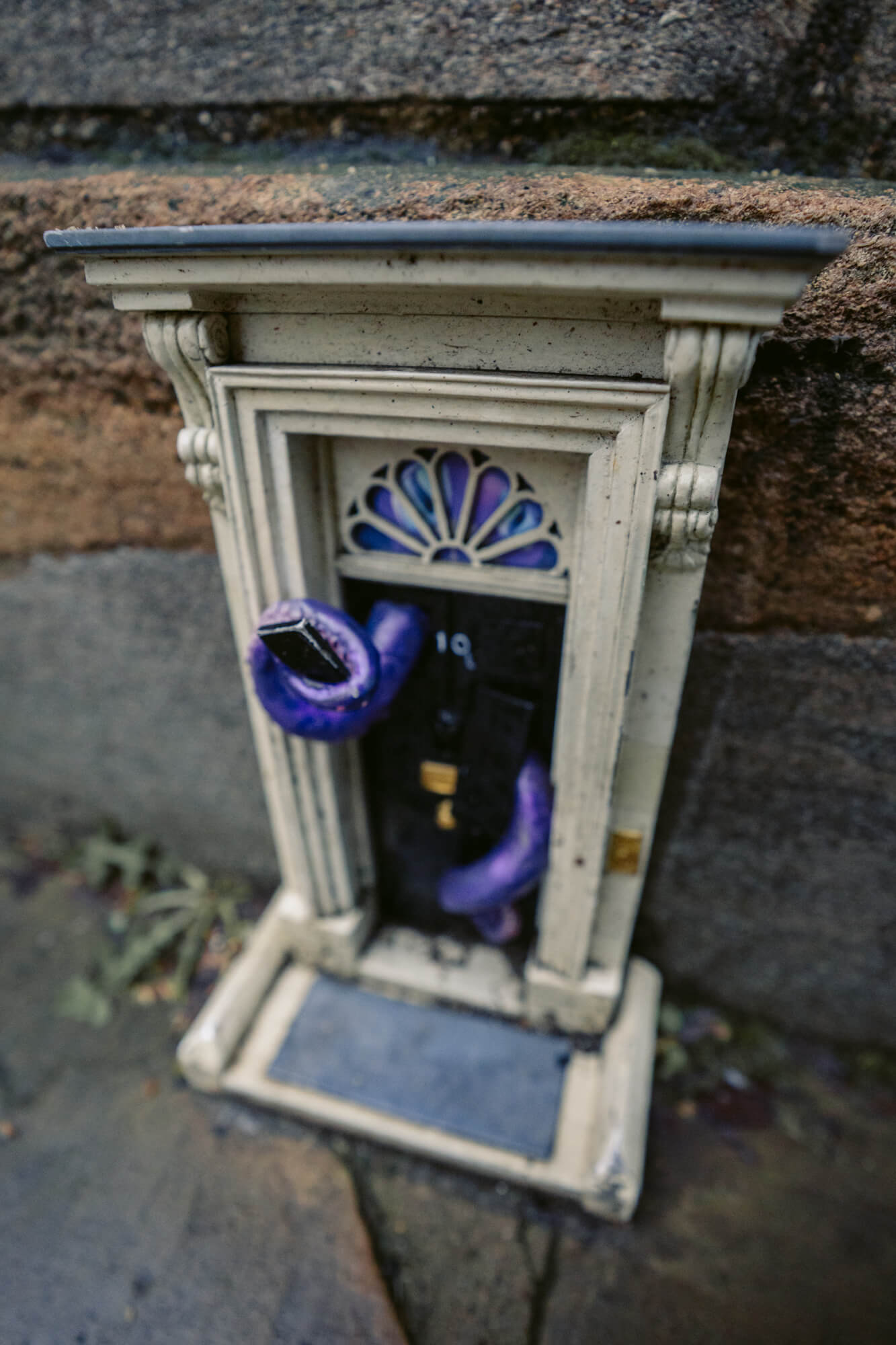
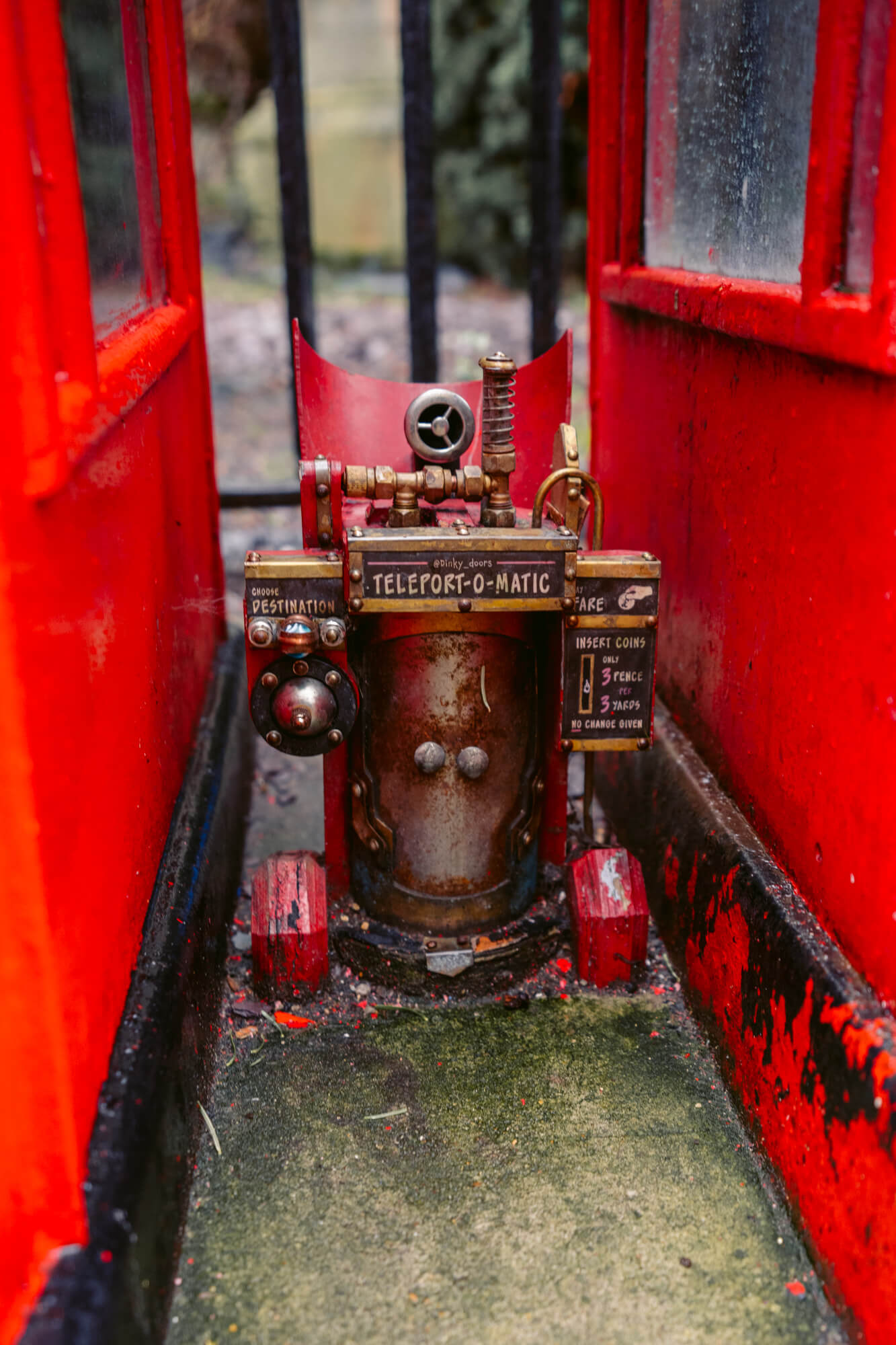
The Mathematical Bridge
As a curved-looking bridge made entirely of straight planks, Cambridge’s Mathematical Bridge might seem at first glance no more than just an old, precarious bridge you may be wary of crossing… but dive a little deeper and you’ll discover it’s a true feat of engineering triumph.
While the bridge you see today was rebuilt in 1905, the original design dates back to the mid-18th century, and it remains one of the most photographed and unique places to see in Cambridge.
Supposedly, the bridge was designed in such a way that if a plank needed fixing, a single one could be extracted and replaced without disturbing its neighbours. Other design considerations have allowed for the wooden bridge to be surprisingly sturdy and resilient to bending.
All in all, however, even if you’re like us and can’t quite wrap your head around the technical wow factor of the bridge, it’s still a worthwhile Cambridge attraction to add to your list!
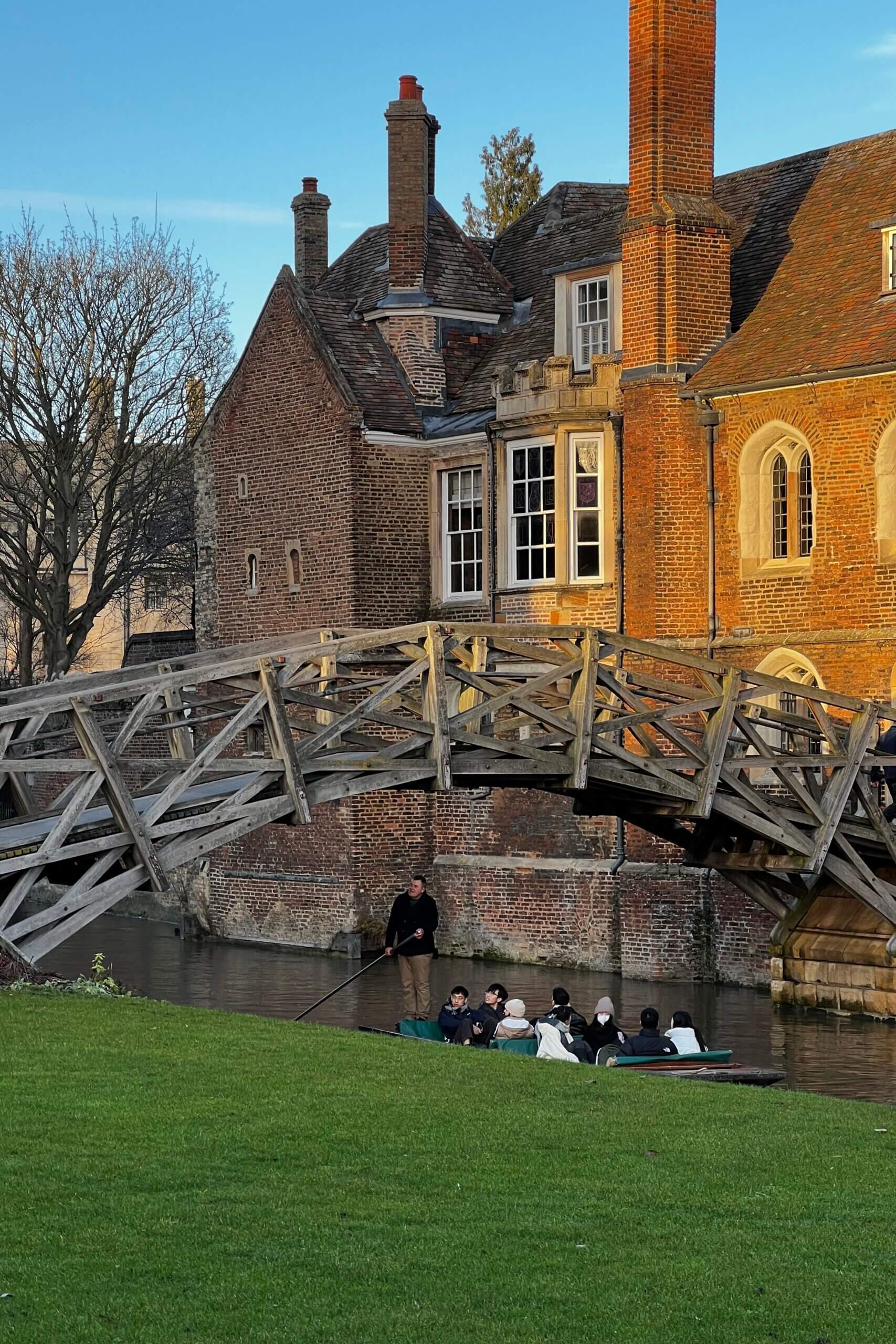
The Corpus Clock
Another one of the more unusual things to see in Cambridge is the large sculptural clock known as the Corpus Clock (or the Grasshopper Clock) located on the outside of the Taylor Library at Corpus Christi College.
While the sculpture vaguely resembles a grasshopper (albeit a rather terrifying one) it’s actually meant to represent a Chronophage (Greek for time-eater) and it does actually move its mouth or blink at intervals, along with a grinding sound.
The clock face is made from a 24-carat gold-plated stainless steel disk and displays the time with slits of light rather than hands and numerals.
This is easily one of the coolest clocks in the world and it was even unveiled to the public by physicist (and Cambridge University alumna) Stephen Hawking.
You can find it at the junction of Bene’t Street and Trumpington Street, just down the road from the King’s College entrance.
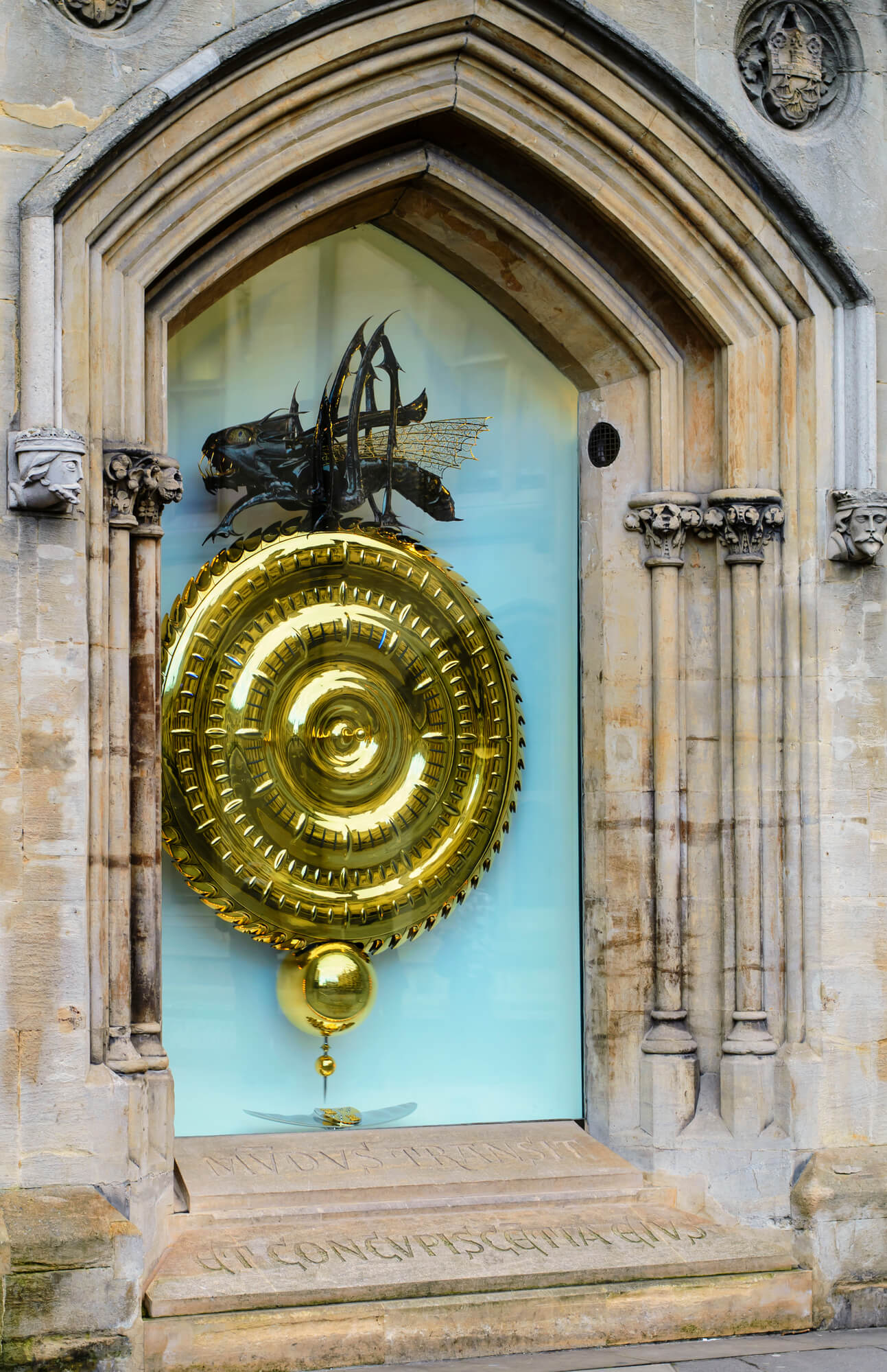
Sedgwick Museum of Earth Sciences
If you’re one of those people who thinks “geology rocks” then you will definitely want to visit the Sedgwick Museum of Earth Sciences since it’s the geology museum of Cambridge University.
This museum houses a collection of around 2 million rocks, minerals and fossils, including more than 400 meteorite specimens. There are also plenty of dinosaur skeletons on display, as well as the first geological map of the UK and rocks collected by Charles Darwin during his HMS Beagle voyage around the world.
While we weren’t really expecting to be that excited about ”a museum of rocks” we actually found this a really fascinating place. The building itself is also historic and impressive – it’s actually the oldest museum in Cambridge.
PRACTICAL INFO FOR VISITING: The museum is open Monday – Friday from 10am to 1pm and then 2pm – 5pm, as well as 10am-4pm on Saturdays. It’s free to visit and there are often activities, workshops and other events held here.
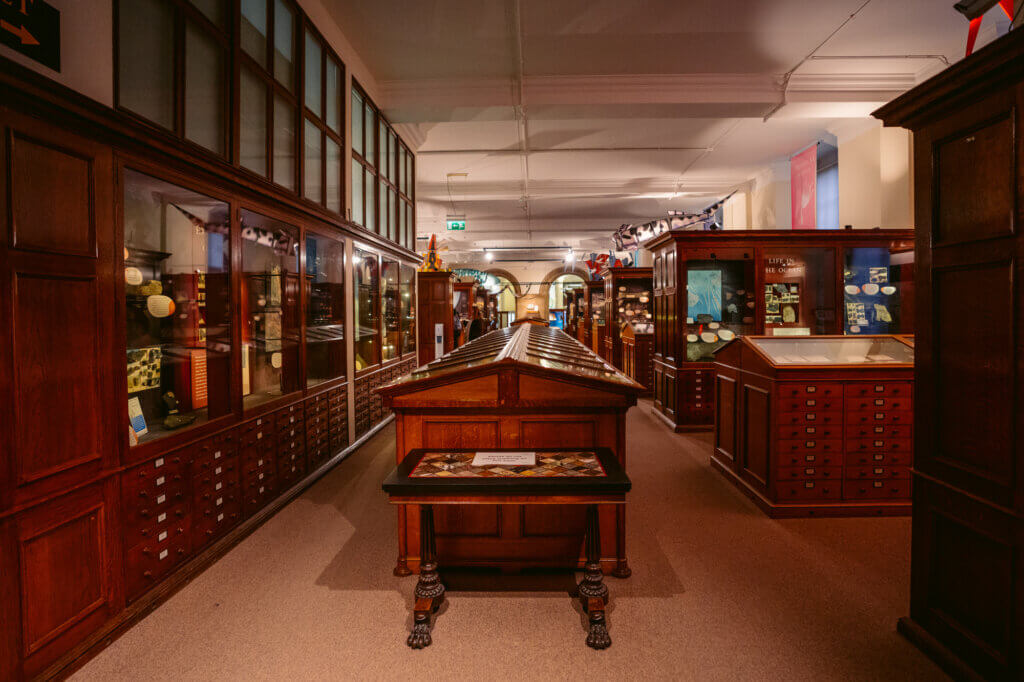
Museum of Zoology
Visitors who are interested in wildlife will definitely want to add the Museum of Zoology to their list of must-visit Cambridge destinations, especially as it contains some truly epic skeleton displays.
One of the most breathtaking sights at the Cambridge University Museum of Zoology is the full-size finback whale skeleton which hangs above the main entrance hall, but there are plenty of prehistoric and modern skeletons throughout the museum. Many of the specimens on display were collected during the great expeditions of the 19th century, including some contributions from Charles Darwin himself.
For real animal lovers, the museum also has a downloadable “Cambridge Urban Safari Trail” where you can search out all the many real and mythological animals that feature on architecture throughout the city. It’s a very unique way to explore Cambridge too!
PRACTICAL INFO FOR VISITING: The Museum of Zoology is open Tuesday to Saturday from 10am until 4.30pm and on Sundays from midday until 4.30pm. Entry is free.
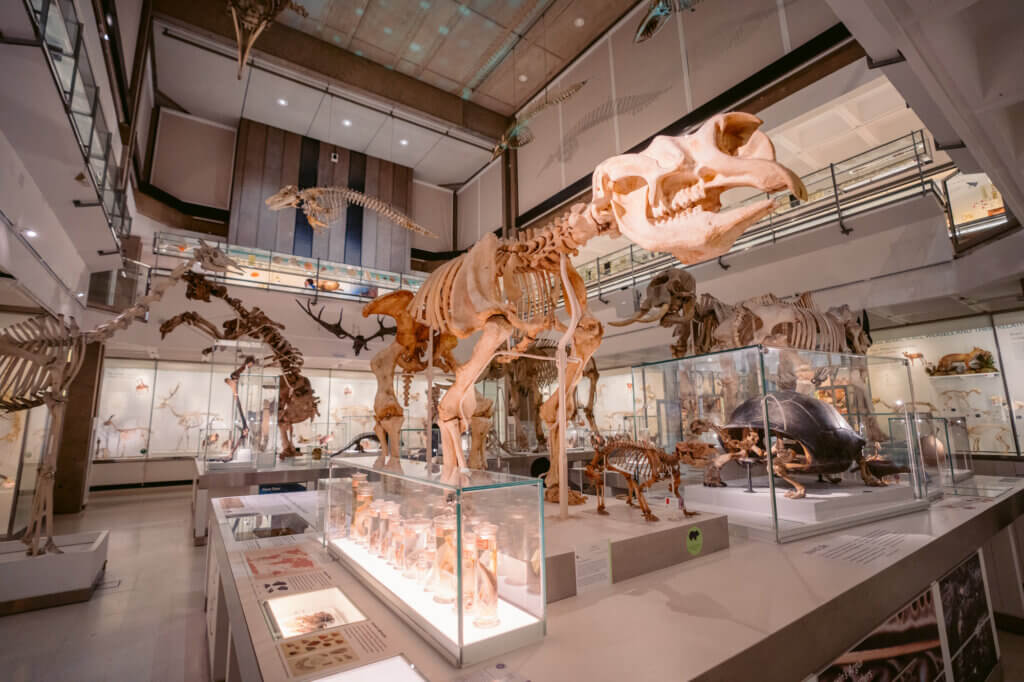
Museum of Archaeology and Anthropology
Also known as MAA, the University of Cambridge Museum of Archaeology and Anthropology houses the university’s collections of local antiquities, as well as archaeological and ethnographic artefacts from all over the world.
While geology looks at rocks and minerals and zoology studies animals, this museum focuses on human history. The main hall focuses on the archaeology and history of Cambridge itself. One of the highlights on display here is the Arbury Coffin, which contained the bones of a woman, a shrew, and a mouse; and inspired Sylvia Plath’s poem “All the Dead Dears.”
Other displays in the museum showcase art and artefacts from around the world, including exquisite Asian sculptures and an 8-metre tall Maori flagpole from New Zealand.
PRACTICAL INFO FOR VISITING: The Museum of Archaeology and Anthropology is open Tuesday – Saturday from 10am until 5pm and on Sundays from midday until 5pm. It’s also free to visit.
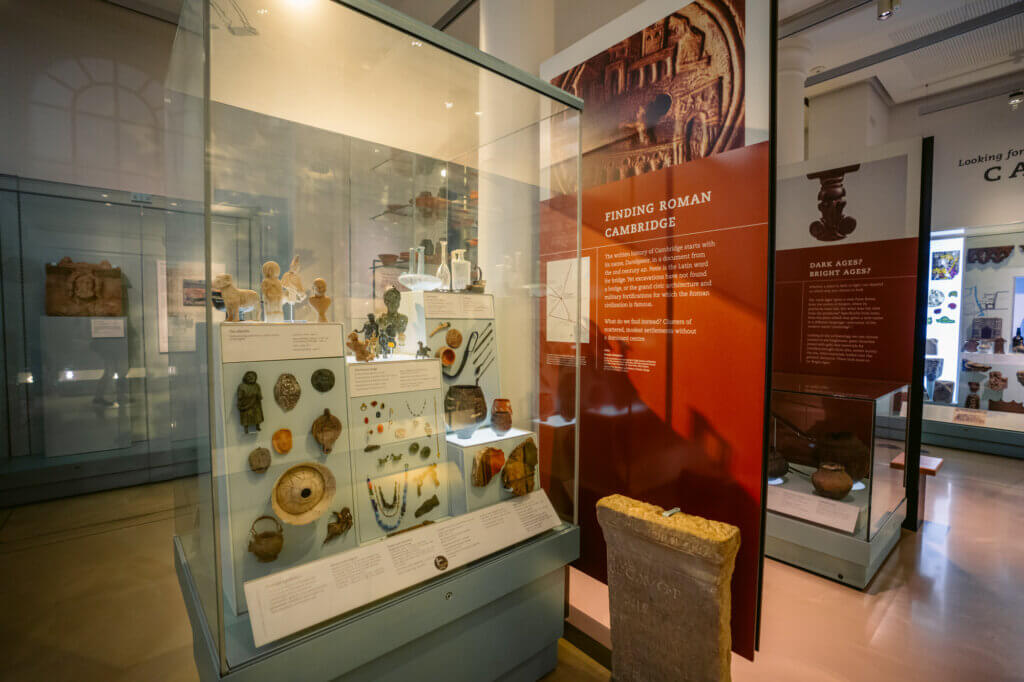
Scott Polar Research Institute
The Scott Polar Research Institute is a sub-department of Cambridge University’s Department of Geography, which focuses on research in the polar regions.
The institute was named for Captain Robert Scott, who famously (along with his companions) died on their return journey from the south pole in Antarctica in 1912. There is also a Polar Museum inside this institute, where visitors can see material related to polar history, exploration, science, art and Arctic cultures.
In particular, Robert Scott’s final letters and the folding camera he used at the south pole are on display here, along with some beautiful artwork of the Arctic and Antarctic lands.
PRACTICAL INFO FOR VISITING: It’s free to visit the Polar Museum at the Scott Polar Research Institute, which is open Wednesday to Sunday from 10am until 4pm.
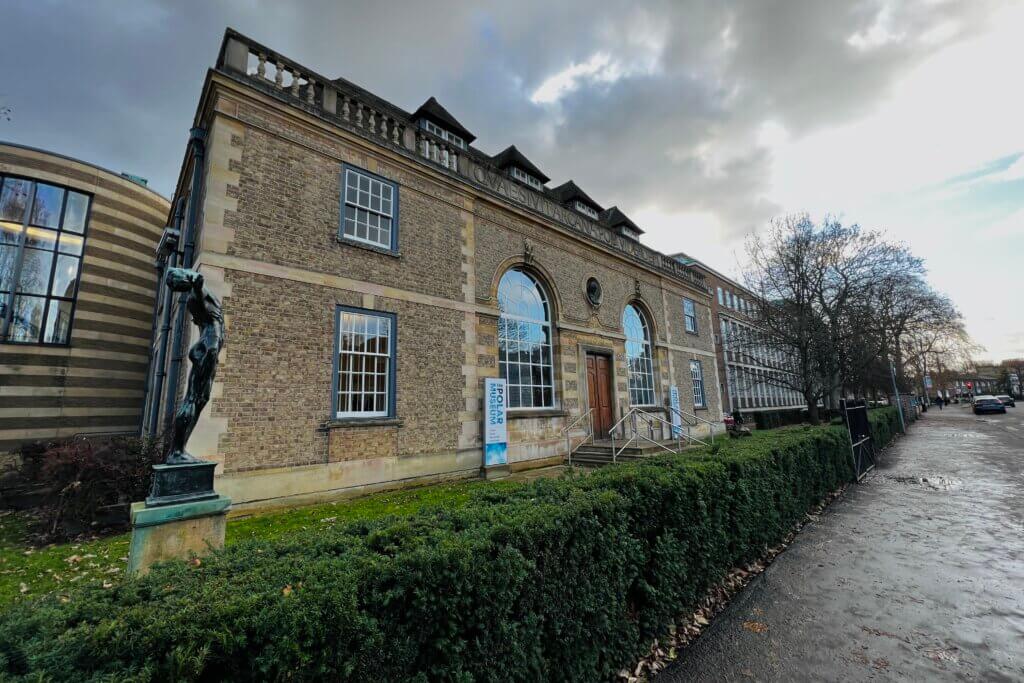
Museum of Classical Archaeology
As part of the University’s Classics department, the Cambridge Museum of Classical Archaeology is quite unique in that it doesn’t display original pieces of art from ancient Greece and Rome but rather plaster casts of the originals.
Since there is increasing pressure on museums worldwide to return artefacts to the places they were taken from, this is a refreshing and still fascinating way to explore Greek and Roman sculpture.
In fact, the Cambridge Museum of Classical Archaeology contains one of the largest collections of plaster casts in the world and often displays the austere marble statues next to a colourfully painted version to show how they would have been decorated when the originals were made.
PRACTICAL INFO FOR VISITING: Like most of Cambridge’s university museums the Museum of Classical Archaeology is free to visit. It’s open Tuesday – Friday from 10am until 5pm and on Saturdays (during term time only) from 2pm until 5pm.
The Museum of Cambridge
Formerly known as the Cambridge & County Folk Museum, the Museum of Cambridge is one of the best places to find out about the history of the town of Cambridge and its surroundings from the 1700s onwards.
Located in a Grade II listed building that used to be the White Horse Inn, this museum displays almost 40,000 objects which reflect the history of Cambridge the town and the wider Cambridgeshire area. Many of these objects are quite mundane yet historic, like old sewing machines and vacuums while others relate to fantastical local legends of giants and mole people!
This museum might be nostalgic for older visitors but it also offers a wide and varied program of events for all ages. Unlike many of the other Cambridge museums in this post, the Museum of Cambridge is not affiliated with the university and therefore there are entry fees.
PRACTICAL INFO FOR VISITING: The Museum of Cambridge is open seven days a week from 10am until 5pm (until 4pm on Sundays) and costs 6 GBP for adults. It’s free for children under the age of 16.
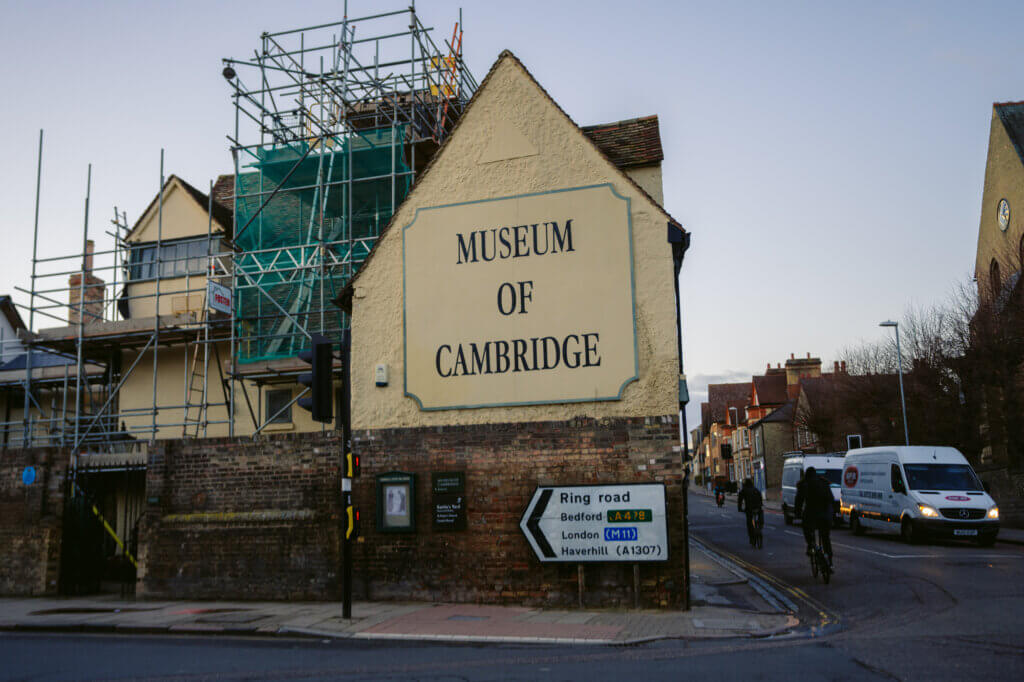
Whipple Museum of the History of Science
Scientists and history buffs alike will find the Whipple Museum of the History of Science fascinating, as it contains all sorts of items relating to the study of science throughout the ages.
There are displays of scientific instruments, apparatus, models, pictures, prints, photographs, books, and more, from the medieval period and beyond, all relating to how humans have studied science. Objects used in the fields of astronomy, navigation and mathematical calculations are also included.
Even if you are only partially interested in the history of science you will find this museum interesting, especially as it displays how humans have refined their scientific practices over the centuries. It’s also used extensively in the teaching of the university’s Department of History and Philosophy of Science.
PRACTICAL INFO FOR VISITING: As part of the University of Cambridge’s museum consortium, the Whipple Museum is free to visit. It’s open Monday – Friday from 12.30pm until 4.30pm.
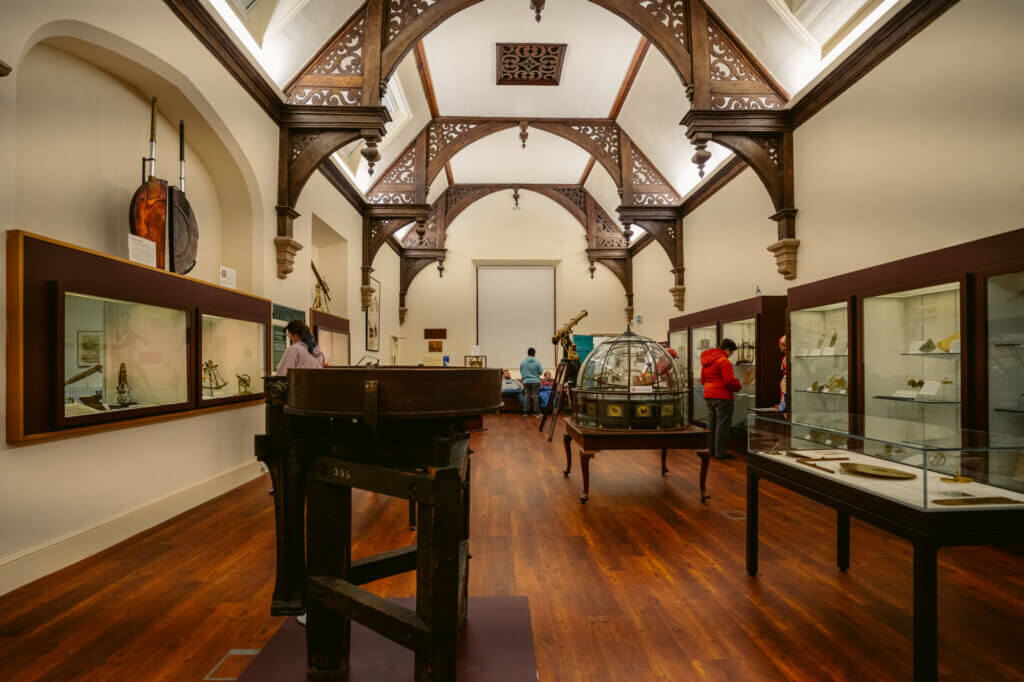
Centre for Computing History
If you can remember the days of dial-up internet (and even if you can’t) you will find this museum about the Information Age quite fascinating!
The Centre for Computing History is a museum that tells the story of the Information Age: the period which began in the mid-20th century and is also often called the Computer Age or Digital Age. The collection comprises vintage computers, game consoles, software, manuals, magazines and other literature related to computers.
One of the best parts of this museum is that many of the exhibits are hands-on, so visitors can actually interact with the computers and games of the past in a fun way. It also prompts you to really think about the historical, social and cultural impact of computers in our modern lives.
PRACTICAL INFO FOR VISITING: The Centre for Computing History is open Wednesday – Sunday from 10am until 5pm during term time, and seven days a week during school holidays. Entry costs 10 GBP for adults and 7 GBP for children between 5 and 16.
Cambridge Museum of Technology
The Cambridge Museum of Technology goes in almost the opposite direction from the Centre for Computing History, looking at the history of industrial engineering and technology, particularly during the 19th century.
Housed in a former sewage pumping and waste destructor station, this museum celebrates the industrial heritage of the area. While the building itself is historic, the interior collection also contains many interesting audio-visual displays, hands-on exhibits and fun activities for children.
This museum is especially fascinating since it focuses on an often overlooked aspect of Cambridge’s history, that of the forgotten industries rather than the famous colleges. Highlights include a working steam winch, the steam engine room and the ash disposal railway. The valve yard outside is also a lovely spot for a picnic in the summer months.
PRACTICAL INFO FOR VISITING: The Cambridge Museum of Technology is only open on weekends between 10.30am and 4pm. Adult tickets cost 5 GBP and tickets for children between 5 and 18 are 3 GBP.
Kettle’s Yard
It was back in 1954 that Jim Ede envisioned ‘a living place where works of art could be enjoyed… where young people could be at home unhampered by the greater austerity of the museum or public art gallery.”
Kettle’s Yard in Cambridge is where he ultimately brought his vision to life. Today a free space dedicated to modern and contemporary art, Kettle’s Yard is one of the best places to visit in Cambridge for lovers of art and culture.
As a bonus, the collection is housed in the former home of Jim Ede, who was once a curator at the Tate! All in all, this historic yet homey setting makes for a perfect Cambridge must-see on a rainy day.
PRACTICAL INFO FOR VISITING: Entry is free, but you must book a free ticket in advance of your visit.
Ascension Parish Burial Ground
While it may seem morbid to list a graveyard as one of the top places to visit in Cambridge, this is no ordinary cemetery.
A walk through here is akin to a “Who’s Who?” of famous intellectuals who changed the scientific world as we know it.
From Sir John Cockcroft (who split the atom) and Sir Frederick Gowland (who first identified the existence of vitamins) to Charlotte Scott (the first British woman to get a doctoral degree), it’s little wonder why this cemetery is often hailed as the brainiest in Britain.
So, if you’re looking for unusual places to visit in Cambridge, be sure to add this spot to your list!
“Newton’s Apple Tree”
While its connection to Newton is likely dubious and more ‘made for tourists’ than anything else, the so-called “Newton’s Apple Tree” is another one of the most unique Cambridge attractions that’s worth a quick look, especially given its central location in the city.
The “Flower of Kent” variety of apple tree located outside the entrance to Trinity College is apparently an offshoot of the real apple tree from Isaac Newton’s childhood home where he first discovered the laws of gravity. He attended Cambridge University in 1661 but returned home after an outbreak of the plague and it was while he was back home that he saw the apple fall and made his discovery.
That tree at Woolsthorpe Manor in Lincolnshire is now managed by the National Trust, but the one in Cambridge was planted to honour his links at the university. It’s located just to the right of Trinity College’s Great Gate, and while you can’t go on the grass, you can still snap a photo of this special tree!
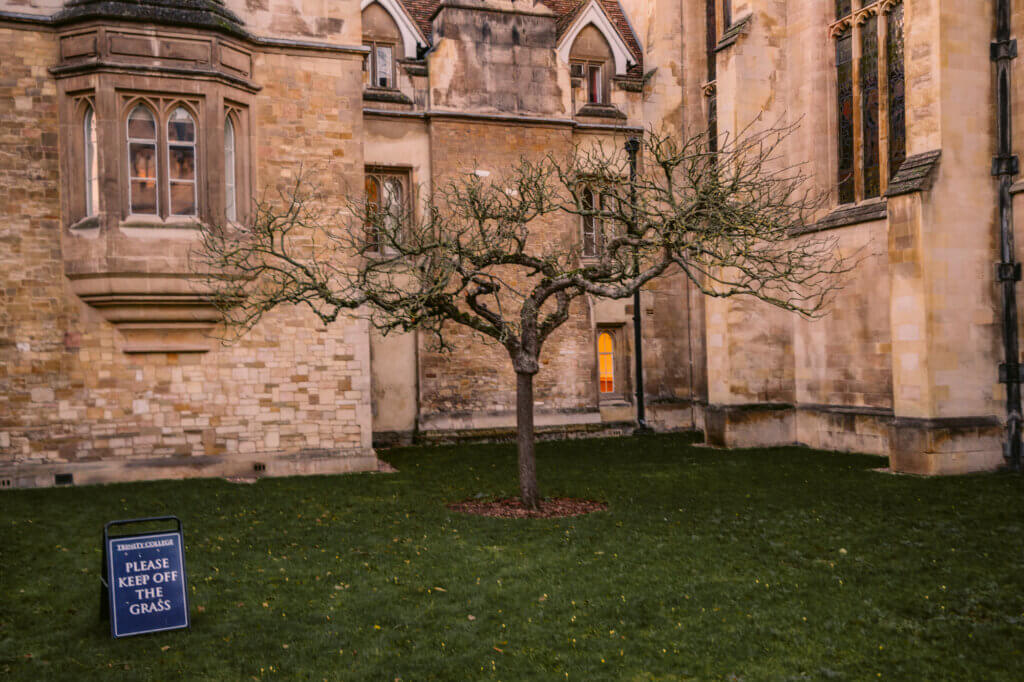
Market Square
If you need a break from museums and university sights, head to the historic Market Square for a refreshing change of pace!
Cambridge was originally a market city and there have been market stalls trading in this location since the middle ages. The market is open every day of the year (except Christmas Day, Boxing Day and New Year’s Day) from 10am until 4pm, with a plethora of things to buy or browse.
Along with fresh food and ingredients you can expect to find art, plants, clothes, jewellery, books, music and much, much more available here. It’s also a great spot for affordable snacks and meals, with everything from bubble tea to Greek gyros on offer.
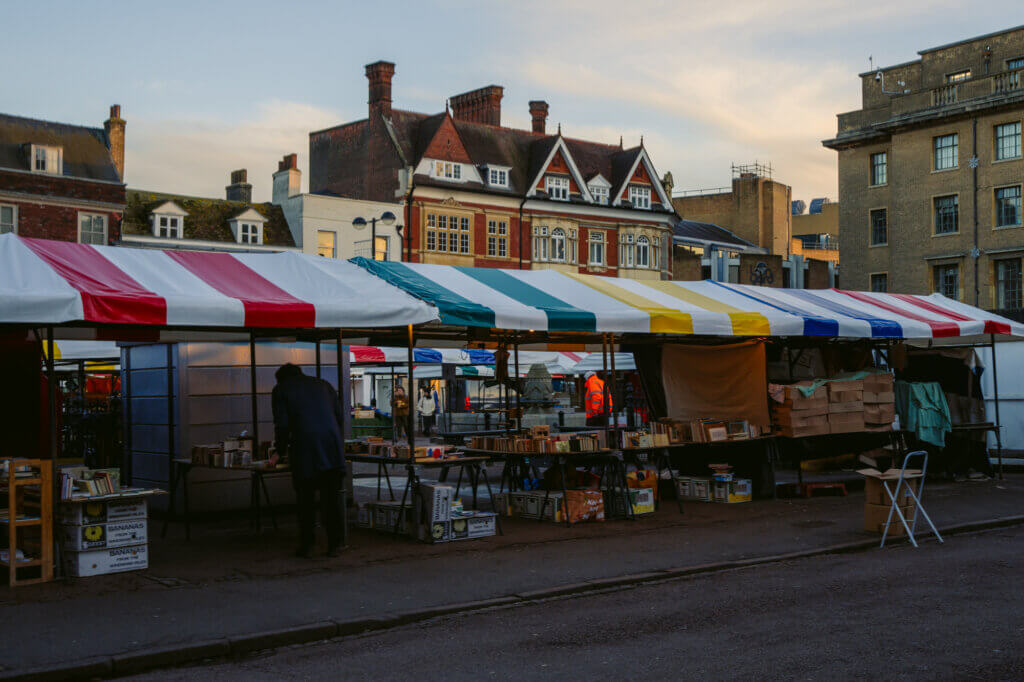
The Round Church
The Church of the Holy Sepulchre in Cambridge is significant in that it’s the second oldest building in Cambridge (after St Bene’t’s Church) and it’s also one of only four surviving round churches in England.
All of these round churches were inspired by the Circular Church of the Holy Sepulchre in Jerusalem, which was built by Constantine the Great in the 4th century, possibly on the very site where Jesus was buried. The round shape is believed to represent the resurrection and all four of the remaining English ones were built after the First Crusade of 1097, presumably after the Crusaders saw Constantine’s original.
While the round church of Cambridge gets overshadowed a bit by the other spectacular buildings in the city, it’s well worth a visit inside to learn more about it at the Round Church Visitor Centre.
PRACTICAL INFO FOR VISITING: The Round Church Visitor Centre is open Tuesday – Saturday from 10am until 5pm. Entry costs 12 GBP for adults and it’s free for children under 13.
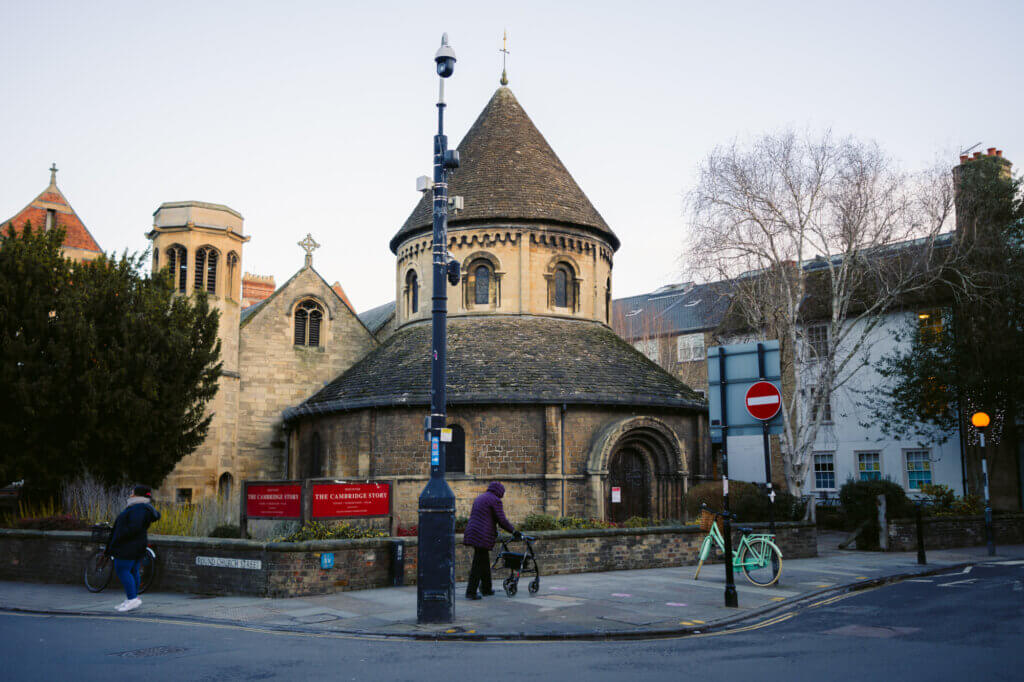
Cambridge Botanic Gardens
Covering an area of 40 acres (16 hectares) of gardens and greenhouses, the Cambridge University Botanic Garden is an enchanting spot to wander around and see plant collections from around the world.
While the botanic garden is used for teaching and research in the University’s Plant Sciences Department, it’s also open to any visitors with a passion for gardening, or who just want to relax in a pretty environment. There’s a garden café if you want to have food and drink, as well as a charming water fountain in front of the greenhouses.
Some highlights include the variety of carnivorous plants on display in the greenhouses, along with an important scientific research collection of lavender and a stunning autumn colour garden.
PRACTICAL INFO FOR VISITING: The Garden is open every day from 10am but closing times vary depending on the season (usually 4pm in winter, 6pm in summer and 5pm in October). Adult tickets cost 8 GBP while children under the age of 16 can visit for free.
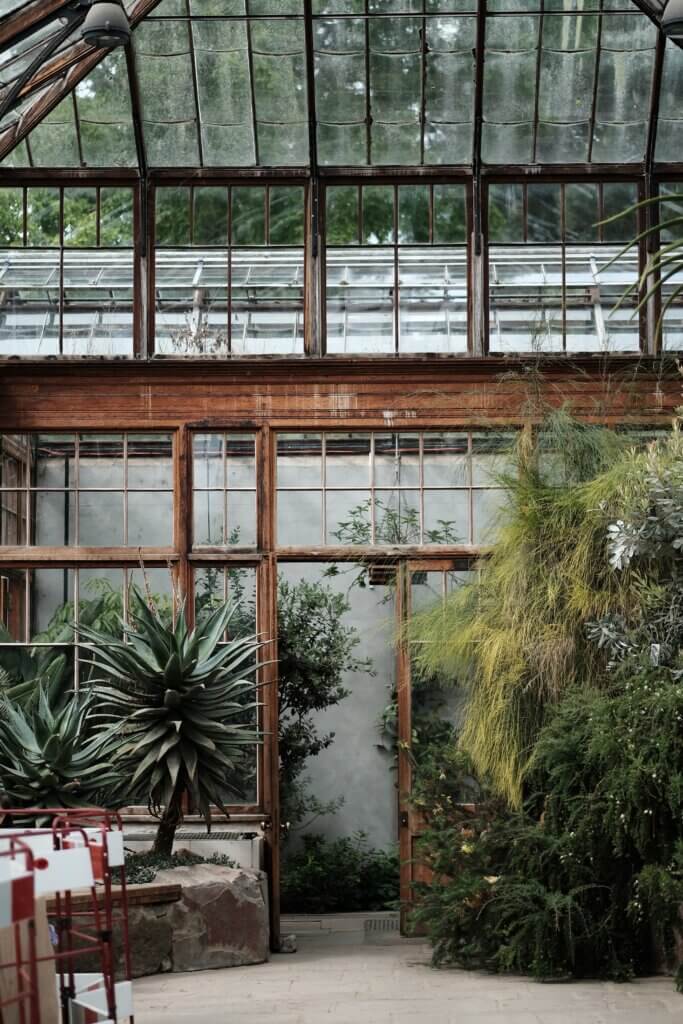
Mill Road
Mill Road is one of the top places to visit in Cambridge for lovers of all things vintage.
Often called “the Notting Hill of Cambridge” this neighbourhood centres around the road leading out of the city centre, which was named for the windmill that once stood on the corner of the aforementioned road and Covent Garden. This main road is now known for being lined with bougie cafés, restaurants and shops, particularly bohemian vintage ones.
It’s a popular residential area as it’s both close to the main train station and the city centre, without being right in the middle of all the university colleges (and therefore all the tourists). But if you are visiting Cambridge it’s a lovely neighbourhood to dine on international cuisine and sip some excellent coffee while perusing the shops.
Did we miss any of your favourite places to visit in Cambridge?
Let us know in the comments so we can add more recommendations to the list!
